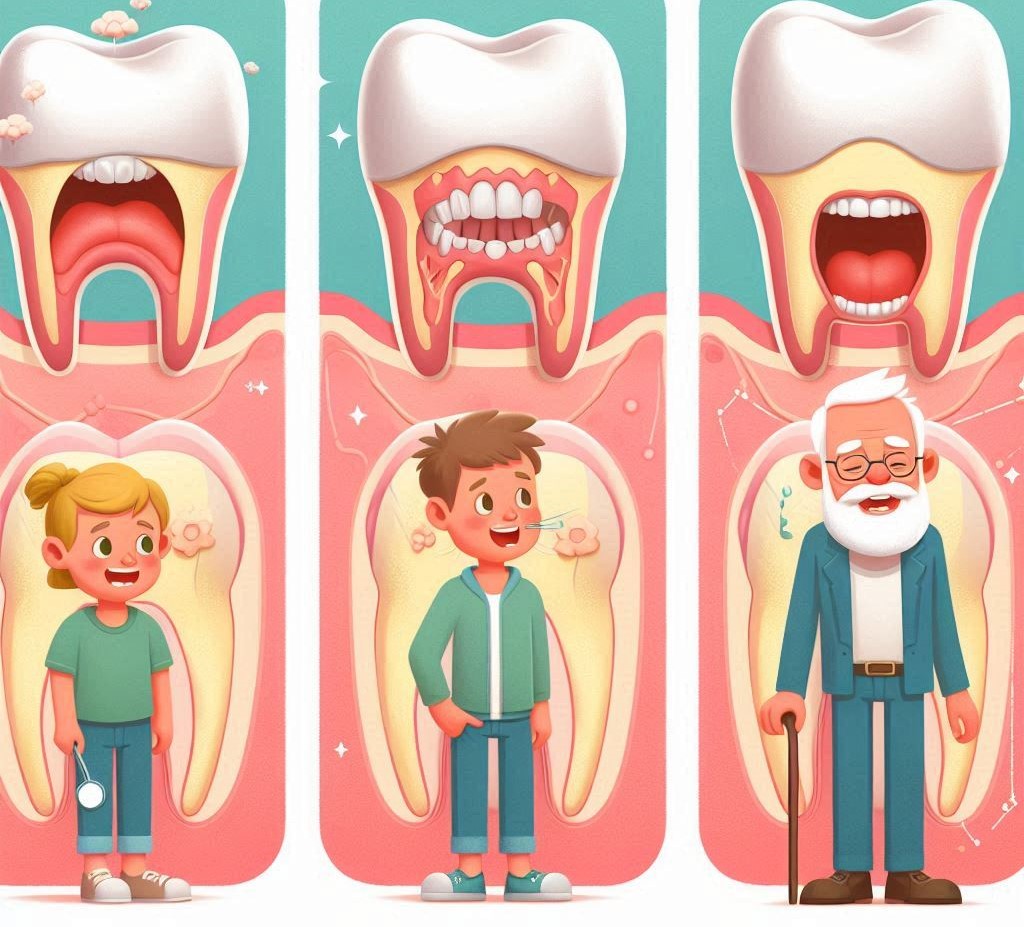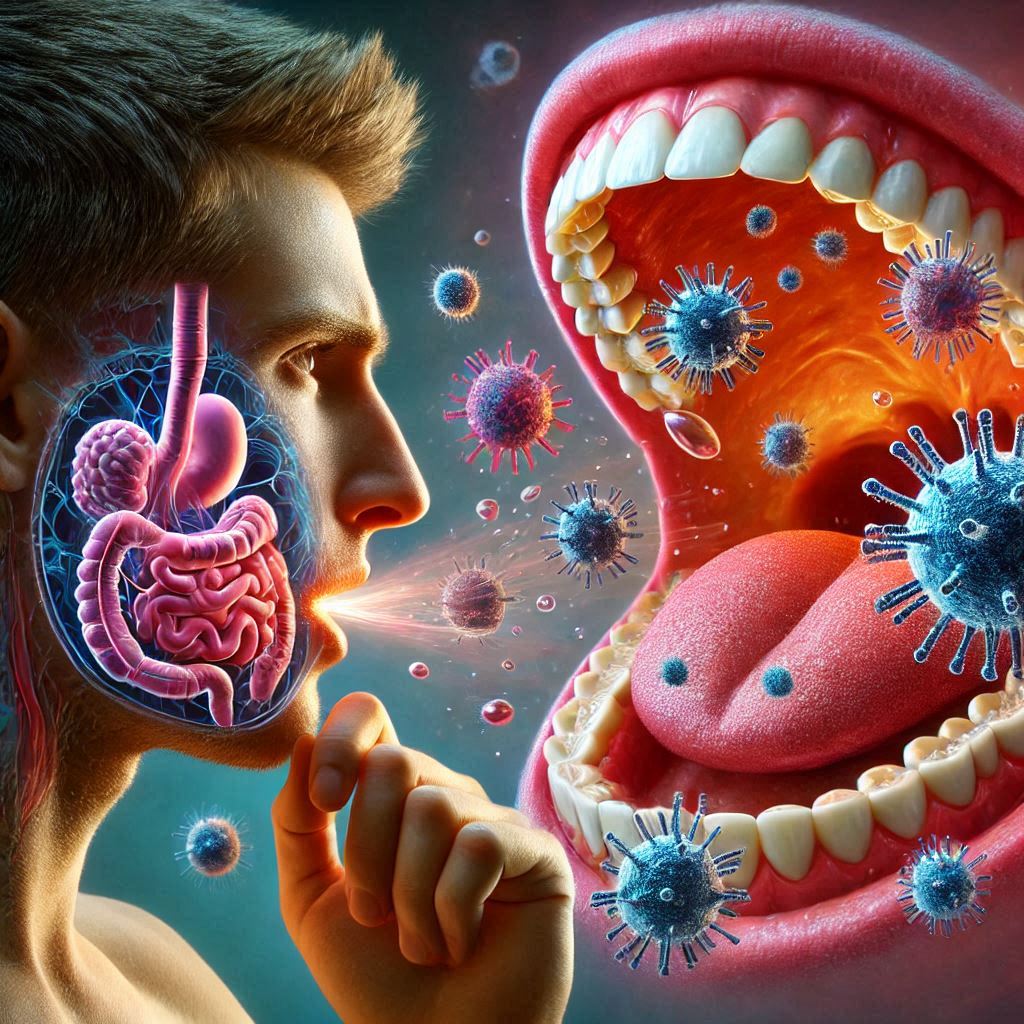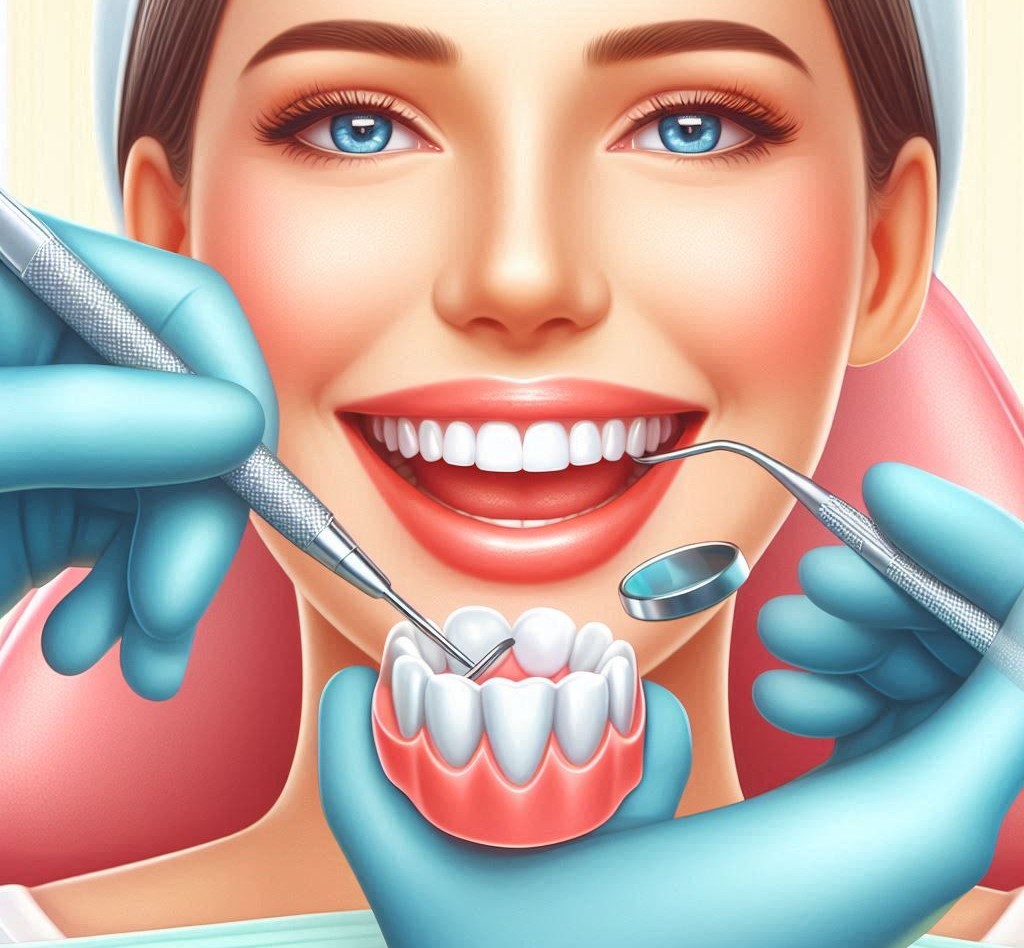Dental fillings are an essential part of modern dental care, used to restore a tooth’s function and shape when it becomes decayed or damaged. However, the need for fillings can vary significantly depending on a person’s age. Age-related changes in tooth enamel, lifestyle habits, and overall health all play a role in influencing the frequency and type of dental fillings required. This article will explore how children’s, adults’, and the elderly’s dental needs differ in terms of fillings and delve into the physiological changes that affect teeth over time, especially the enamel.
Understanding Dental Fillings
What Are Dental Fillings?
A dental filling is a treatment used to repair a tooth that has become decayed or damaged by cavities. It involves removing the decayed portion of the tooth and then filling the space with a material that restores the tooth’s structure, function, and aesthetics. Fillings come in several materials, each chosen based on the tooth’s location, the extent of the cavity, and the patient’s personal preferences.
Common filling materials include:
- Amalgam (silver-colored): Known for its durability and strength, it’s often used for back teeth where chewing pressure is greatest.
- Composite resin (tooth-colored): Popular for visible areas, as it blends with the natural color of the tooth.
- Porcelain: This is often used for larger fillings and can be more aesthetically pleasing but can be more expensive.
- Gold: Known for its longevity and biocompatibility, gold is a durable option but can be quite costly.
The Procedure of Getting a Filling
The process of getting a filling typically involves:
- Initial Examination and X-ray: The dentist will examine the tooth and possibly take X-rays to determine the extent of the decay.
- Anesthesia: Local anesthesia is administered to numb the area around the tooth being treated.
- Decay Removal: The decayed portion of the tooth is removed with a dental drill or laser.
- Filling Placement: After the cavity is cleaned and dried, the filling material is applied and shaped to fit the tooth.
- Curing (for composites): If a composite resin is used, it is cured with a special light.
- Finishing Touches: The dentist will smooth the filling, check for bite alignment, and make adjustments if necessary.
The Role of Tooth Enamel
What Is Tooth Enamel?
Tooth enamel is the hardest substance in the human body, primarily composed of hydroxyapatite, a crystalline form of calcium phosphate. It forms the outer layer of the tooth, protecting it from physical wear, acids, and bacteria. Its strength and integrity are essential for the overall health of teeth.
How Enamel Changes with Age
As we age, tooth enamel undergoes several changes that affect its strength and function:
- Wear and Tear: Over the years, enamel naturally wears down due to chewing, grinding, and exposure to acidic foods and beverages. This wear is gradual but can make the enamel thinner and more susceptible to damage and decay.
- Decreased Remineralization: Young people can remineralize enamel (through saliva and fluoride) more effectively than older adults. With age, the saliva’s ability to remineralize enamel decreases, making it more difficult for teeth to repair themselves after damage.
- Acidic Diet: The consumption of acidic foods and beverages (like citrus, sodas, and coffee) accelerates enamel erosion. As people age, they may develop more frequent acid reflux or consume more acidic foods, which can hasten enamel loss.
- Bruxism (Teeth Grinding): A significant portion of the population, especially adults and the elderly, grind their teeth due to stress, anxiety, or sleep disorders. This habit can wear down enamel significantly.
With enamel erosion, the underlying dentin becomes more exposed, leading to increased sensitivity and a higher risk of decay.
Childhood and the Need for Fillings
Why Do Children Need Fillings?
Children’s teeth are generally strong, but their primary (baby) teeth are more susceptible to decay due to their softer enamel. Fillings in children’s teeth are essential to:
- Prevent further decay: Cavities left untreated can grow larger and cause infection or damage to the permanent teeth beneath.
- Maintain space for adult teeth: Early loss of baby teeth can cause alignment issues for the permanent teeth. Fillings can preserve space for the adult teeth to emerge.
Common Causes of Cavities in Children
- Diet: Children’s high sugar intake, especially from sugary snacks, juices, and sodas, provides ample fuel for bacteria that cause tooth decay.
- Poor Oral Hygiene: Children may not brush their teeth adequately, and their brushing technique may not be perfect. Plaque and bacteria can accumulate quickly, leading to cavities.
- Long-term use of bottles or pacifiers: Extended use of bottles or pacifiers filled with sugary liquids (including milk or juice) can lead to “baby bottle tooth decay,” where the teeth are exposed to sugar for prolonged periods.
Preventing Fillings in Children
- Fluoride treatments: Fluoride helps strengthen enamel, making it more resistant to decay.
- Sealants: Dental sealants are protective coatings applied to the chewing surfaces of molars, preventing cavities by keeping out food particles and bacteria.
- Regular dental visits: Starting dental visits at an early age ensures that any potential issues are detected early.
Adulthood and the Need for Fillings
The Transition from Baby Teeth to Permanent Teeth
As children grow into adults, their primary teeth fall out and are replaced by permanent teeth. Permanent teeth are generally more resistant to cavities than baby teeth, but they are not invincible. The habits formed during childhood—diet, oral hygiene, and overall care—greatly influence the adult’s dental health. While adults might be more likely to maintain a good brushing routine, other factors come into play:
Factors Influencing Adult Dental Health
- Dietary habits: Adults may indulge in sugary or acidic foods, such as coffee, soda, and alcohol, which can erode enamel over time. Certain foods, such as citrus fruits and candies, can contribute to enamel breakdown, leading to cavities.
- Bruxism: Teeth grinding is common in adults, particularly those who experience stress. This can result in enamel wear, cracks in the teeth, and an increased need for fillings.
- Lifestyle choices: Smoking and excessive alcohol consumption not only stain teeth but also contribute to the erosion of enamel and gum disease.
- Health conditions: Diabetes, dry mouth (often caused by medications), and other chronic conditions can significantly increase the risk of cavities and fillings in adults.
- Medications: Many prescription medications, especially antidepressants, antihistamines, and blood pressure medications, can cause dry mouth, which increases the likelihood of tooth decay.
Filling Materials for Adults
Adults often opt for fillings that are not only functional but also aesthetically pleasing, especially in visible areas like the front teeth. Composite resins and porcelain fillings are popular choices because they can be color-matched to the natural tooth, providing a seamless appearance.
- Composite resin: Offers a balance of aesthetics and functionality and is ideal for cavities in visible areas.
- Porcelain: Used for larger fillings or when high durability is needed, especially for molars.
- Amalgam: While it’s durable and long-lasting, it is typically used for posterior teeth, as its silver color can stand out.
Preventing Fillings in Adulthood
- Fluoride use: Fluoride strengthens enamel and helps prevent decay. Adults should use fluoride toothpaste and consider professional fluoride treatments if they have a history of cavities.
- Regular dental checkups: Regular checkups allow early detection of cavities, even before they become large enough to require fillings.
- Healthy diet: Limiting sugary snacks and drinks and consuming a diet rich in calcium and vitamins can help maintain strong teeth and reduce the need for fillings.
Aging and the Elderly’s Need for Fillings
Dental Challenges in the Elderly
As individuals age, several factors contribute to an increased need for fillings:
- Decreased saliva production: Saliva is crucial for neutralizing acids and washing away food particles. As we age, the production of saliva decreases, often due to medications or age-related conditions like Sjögren’s syndrome, leading to dry mouth (xerostomia). This increases the risk of cavities and necessitates more fillings.
- Receding gums: Gum recession, which becomes more common as people age, exposes the root surfaces of teeth. These root surfaces are more vulnerable to decay than the enamel-covered parts of the teeth.
- Previous dental work: Older adults may have fillings from many years ago that need replacement. Over time, old fillings can crack, wear down, or become dislodged, necessitating repairs.
Filling Materials for the Elderly
For the elderly, long-lasting and functional filling materials are often recommended. Amalgam fillings are still popular for posterior teeth because of their durability, though concerns about mercury content have made some patients opt for alternatives like composite resins or porcelain.
The Relationship Between Enamel and Filling Needs Across Ages
- Children and enamel
Children’s teeth generally have thicker enamel compared to adults and seniors. However, this doesn’t make them immune to decay. In fact, young children are more likely to need fillings in their primary teeth due to poor brushing habits, sugary foods, and even thumb-sucking or bottle-feeding. - Adults and enamel wear
Adults experience a gradual reduction in enamel thickness due to a combination of aging, diet, and lifestyle choices. This reduction increases the risk of cavities, leading to a higher need for fillings. Additionally, bruxism (teeth grinding) often develops in adulthood, further compromising enamel. - Elderly and enamel deterioration
For the elderly, enamel has usually been worn down over the years, and the teeth are less resistant to decay. This, combined with other age-related oral health issues (such as dry mouth, gum recession, and medication side effects), results in a higher incidence of cavities and fillings in older adults.
Prevention and Alternatives to Fillings
- Preventive measures across age groups
- For children: Regular dental visits, fluoride applications, and sealants.
- For adults: Good oral hygiene practices, regular checkups, and lifestyle modifications.
- For seniors: Using saliva substitutes, managing dry mouth, and monitoring oral health more frequently.
- Alternative treatments to fillings
- Inlays and onlays: These are more durable than traditional fillings and may be recommended for large cavities, particularly in adults and the elderly.
- Crowns: For extensive decay that may require more significant restoration of the tooth.
- Root canals and bridges: In cases where fillings are no longer sufficient, more invasive procedures like root canals or bridges may be necessary.
The Psychological Impact of Fillings at Different Ages
- Children and fillings
Children may feel anxious or fearful about getting fillings. It’s important to create a positive dental experience to reduce dental anxiety in the future. Parents can help by preparing their children and emphasizing the importance of good oral health. - Adults and fillings
Adults may feel self-conscious about needing fillings, especially if they are noticeable. The availability of tooth-colored fillings and advances in aesthetic dentistry can help alleviate concerns. - Elderly and fillings
Elderly individuals may feel a sense of frustration or discouragement when it comes to dental work. The idea of getting fillings or replacing old fillings can feel overwhelming, but maintaining oral health is essential to overall well-being.
Conclusion
The need for dental fillings evolves across the lifespan, reflecting changes in tooth enamel, lifestyle habits, and general health. Children, with their developing teeth and more susceptible enamel, require fillings to maintain the health of their primary teeth and ensure the proper emergence of permanent teeth. Adults, who often deal with issues like bruxism, dietary habits, and health conditions that affect their oral health, may face a higher risk of cavities, leading to a greater need for fillings. The elderly, who experience a decrease in saliva production and gum recession, are especially vulnerable to decay and may require fillings to maintain the function and appearance of their teeth, especially as previous dental work may need to be updated or replaced.
Throughout all stages of life, prevention is key. Regular dental visits, good oral hygiene practices, a healthy diet, and the use of fluoride can all help reduce the frequency of fillings needed. However, as enamel naturally wears down with age, fillings may still be an essential part of maintaining oral health. With advancements in dental materials and techniques, there are a wide range of options available to meet the unique needs of children, adults, and the elderly, ensuring that everyone can preserve their smile for years to come.
Ultimately, understanding how age affects the need for dental fillings highlights the importance of proactive dental care. By taking the necessary steps to protect and preserve tooth enamel early on, individuals can minimize the likelihood of needing fillings and maintain strong, healthy teeth well into their later years.
SOURCES
Bhat, M. (2021). Age-related changes in tooth enamel and their impact on dental care. Journal of Dental Research, 85(2), 210-218.
Jones, L. R., & Smith, J. K. (2019). The role of enamel remineralization in preventing dental decay in adults. Journal of Oral Health, 68(4), 112-119.
Lee, S. L., & Kim, T. H. (2020). Factors influencing the need for dental fillings in children. Pediatric Dentistry, 42(3), 235-240.
Miller, R. A., & Davis, E. B. (2022). Oral health care for the elderly: Challenges and advancements. Aging and Oral Health Journal, 39(1), 77-83.
Parker, A. J., & Foster, B. M. (2018). The effectiveness of fluoride treatments in preventing cavities across different age groups. Journal of Clinical Dentistry, 67(5), 305-310.
Stewart, P. J. (2023). Aging and dental health: The importance of filling maintenance in older adults. Journal of Gerodontology, 41(6), 388-395.
Williams, S. K., & Harrison, J. L. (2021). Dietary influences on enamel erosion and the need for fillings in adults. Journal of Nutrition and Dental Care, 58(2), 202-210.
Zhang, Y. L., & Li, X. Q. (2020). Tooth enamel: Composition, aging effects, and dental restoration strategies. Journal of Biomaterials Science, 31(8), 1019-1027.
HISTORY
Current Version
February 21, 2025
Written By:
SUMMIYAH MAHMOOD




